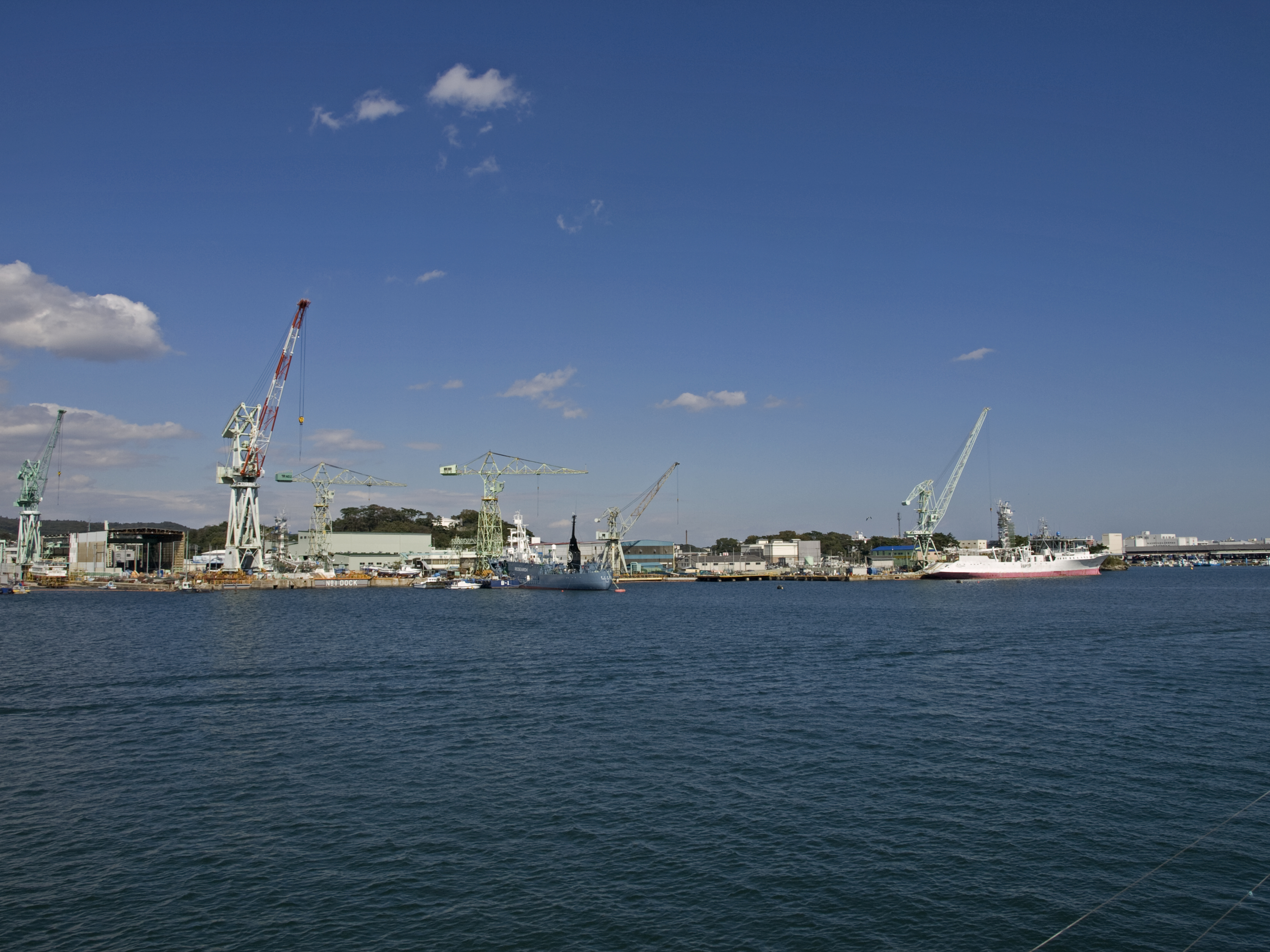|
Shiogama
is a city located in Miyagi Prefecture, Japan. , the city had an estimated population of 52,662, and a population density of 3,032 persons per km² in 23,270 households. The total area of the city is . Geography Shiogama is in north-central Miyagi Prefecture, bordered by the Pacific Ocean to the east. Neighboring municipalities *Miyagi Prefecture **TagajŠ**Rifu ** Shichigahama Climate Shiogama has a humid climate (Köppen climate classification ''Cfa'') characterized by mild summers and cold winters. The average annual temperature in Shiogama is . The average annual rainfall is with September as the wettest month. The temperatures are highest on average in August, at around , and lowest in January, at around . Demographics Per Japanese census data, the population of Shiogama peaked around 1990 and has declined since. Etymology "Shiogama" means "salt furnace" and refers to a local Shinto ritual involving the making of salt from sea water, still performed every July. The ... [...More Info...] [...Related Items...] OR: [Wikipedia] [Google] [Baidu] |
Shiogama Station
is a railway station on the TÅhoku Main Line in the city of Shiogama, Miyagi, Japan, operated by East Japan Railway Company (JR East). Lines Shiogama Station is served by the TÅhoku Main Line, and lies 365.2 km from the official starting point of the line at Tokyo Station. Trains of the Senseki-TÅhoku Line also stop at Shiogama Station, which is 14.3 kilometers from the official starting point of the line at Sendai Station. Station layout Shiogama Station has one elevated island platform serving two tracks, with the station building situated underneath. The station has a "Midori no Madoguchi" staffed ticket office. Platforms History Shiogama Station opened on July 9, 1956. The station was absorbed into the JR East network upon the privatization of the Japanese National Railways (JNR) on April 1, 1987. Passenger statistics In fiscal 2016, the station was used by an average of 2,931 passengers daily (boarding passengers only). Surrounding area *Shiogama City Tam ... [...More Info...] [...Related Items...] OR: [Wikipedia] [Google] [Baidu] |
Shichigahama, Miyagi
is a town located in Miyagi Prefecture, Japan. , the town had an estimated population of 18,447, and a population density of 1400 persons per km² in 6,681 households. The total area of the town is . Geography The town is situated on a peninsula in the middle of Miyagi Prefecture between the cities of TagajÅ in the west and Shiogama in the north and east, and about halfway between Sendai and Matsushima. Shichigahama is the smallest city, town or village by land area in the whole TÅhoku region. The climate is relatively mild compared to its surrounding area and temperatures do not greatly fluctuate. The name Shichigahama literally means "seven beaches". The name comes from the seven seaside villages that originally combined to form the town. The seven beaches of Shichigahama are: Minatohama (æ¹æµ), Matsugahama (æ¾ã¶æµ), Shobutahama (èè²ç°æµ), Hanabuchihama (è±æ¸æµ), Yoshidahama (åç°æµ), Yokasakihama (代ã¶å´æµ) and Toguhama (æ±å®®æµ). In addition to th ... [...More Info...] [...Related Items...] OR: [Wikipedia] [Google] [Baidu] |
Miyagi Prefecture
is a prefecture of Japan located in the TÅhoku region of Honshu. Miyagi Prefecture has a population of 2,305,596 (1 June 2019) and has a geographic area of . Miyagi Prefecture borders Iwate Prefecture to the north, Akita Prefecture to the northwest, Yamagata Prefecture to the west, and Fukushima Prefecture to the south. Sendai is the capital and largest city of Miyagi Prefecture, and the largest city in the TÅhoku region, with other major cities including Ishinomaki, Åsaki, and Tome. Miyagi Prefecture is located on Japan's eastern Pacific coast and bounded to the west by the Åu Mountains, the longest mountain range in Japan, with 24% of its total land area being designated as Natural Parks. Miyagi Prefecture is home to Matsushima Islands, a group of islands ranked as one of the Three Views of Japan, near the town of Matsushima. On 7 April, 2011 the biggest earthquake in Japan occurred. History Miyagi Prefecture was formerly part of the province of Mutsu. 2011 T ... [...More Info...] [...Related Items...] OR: [Wikipedia] [Google] [Baidu] |
